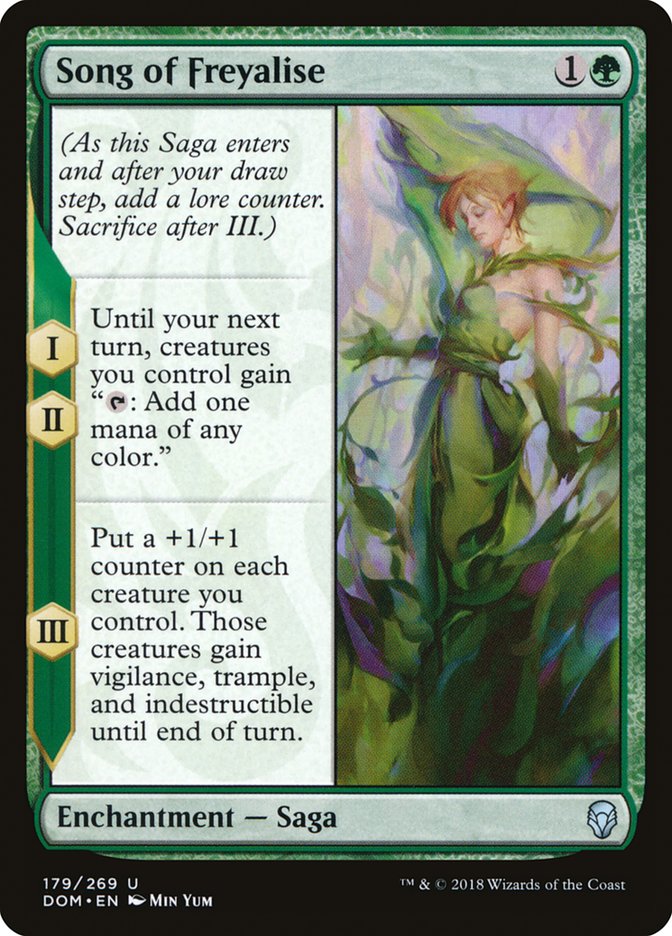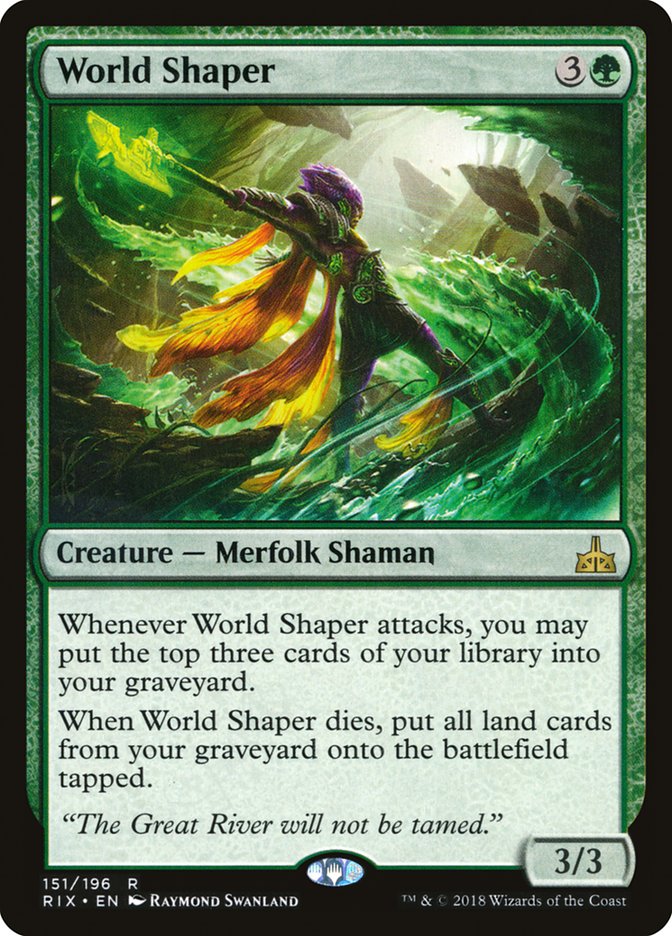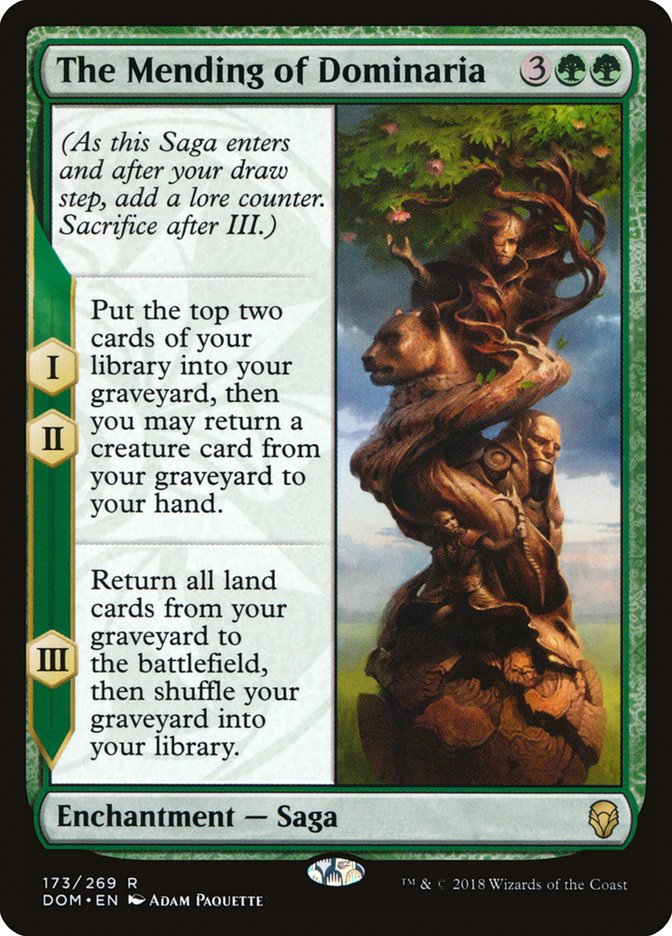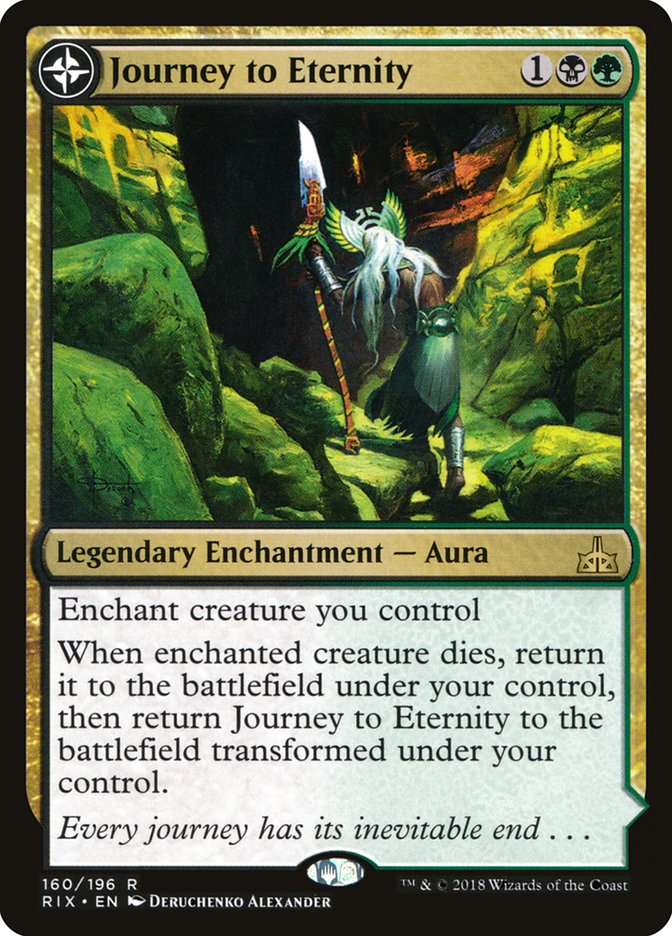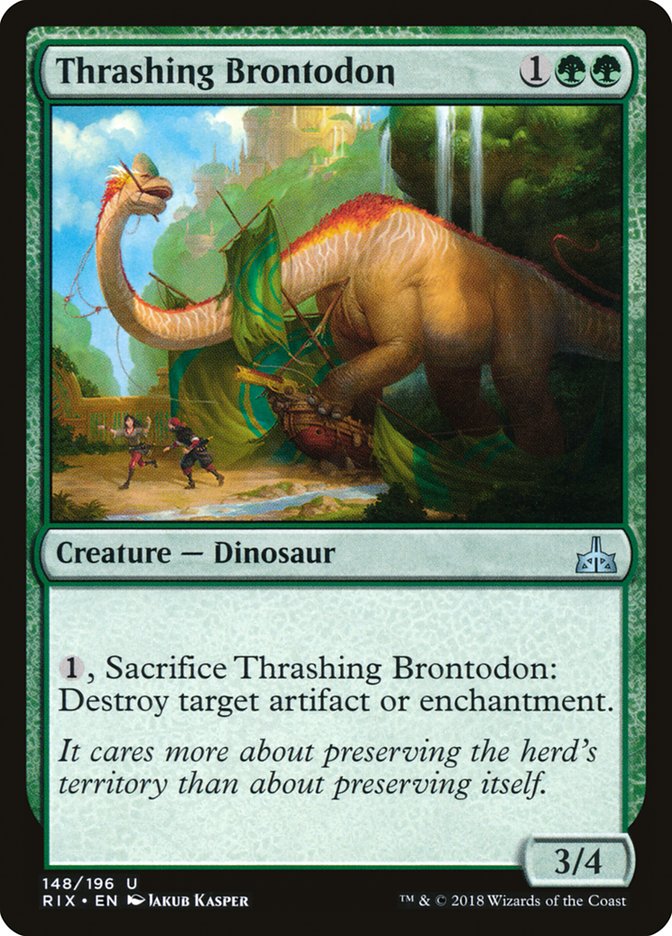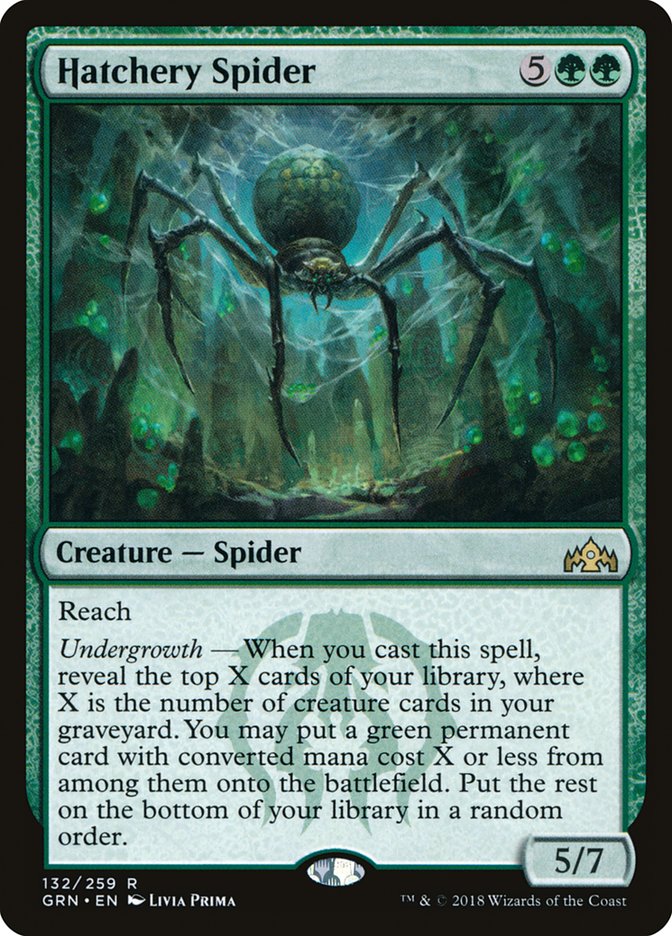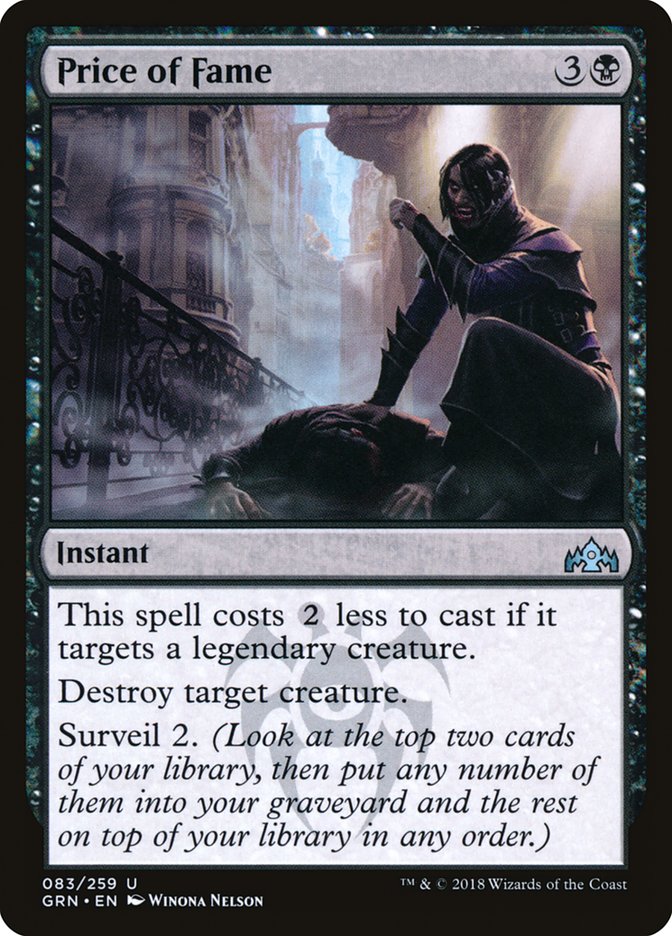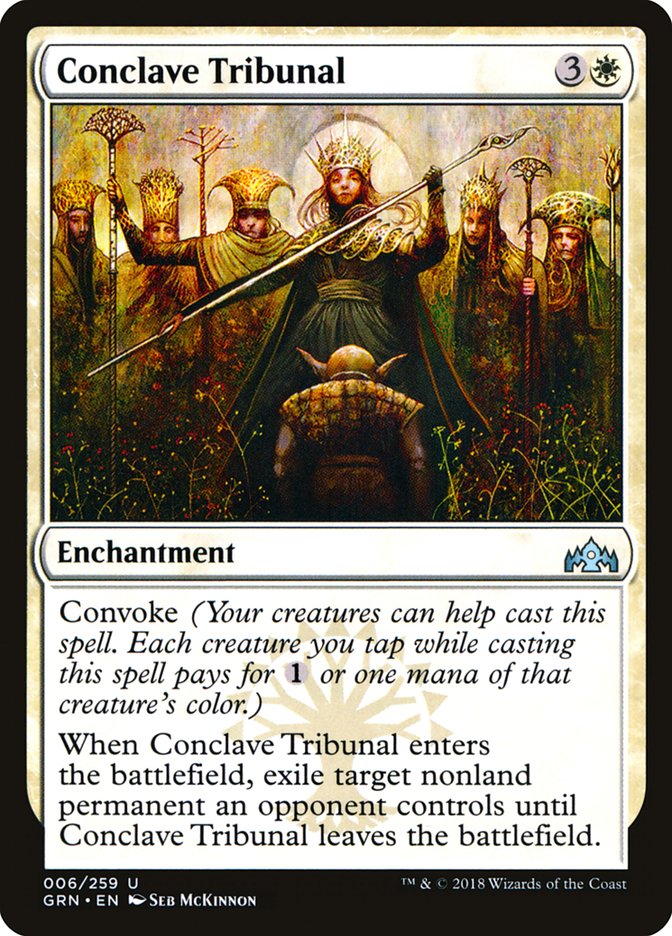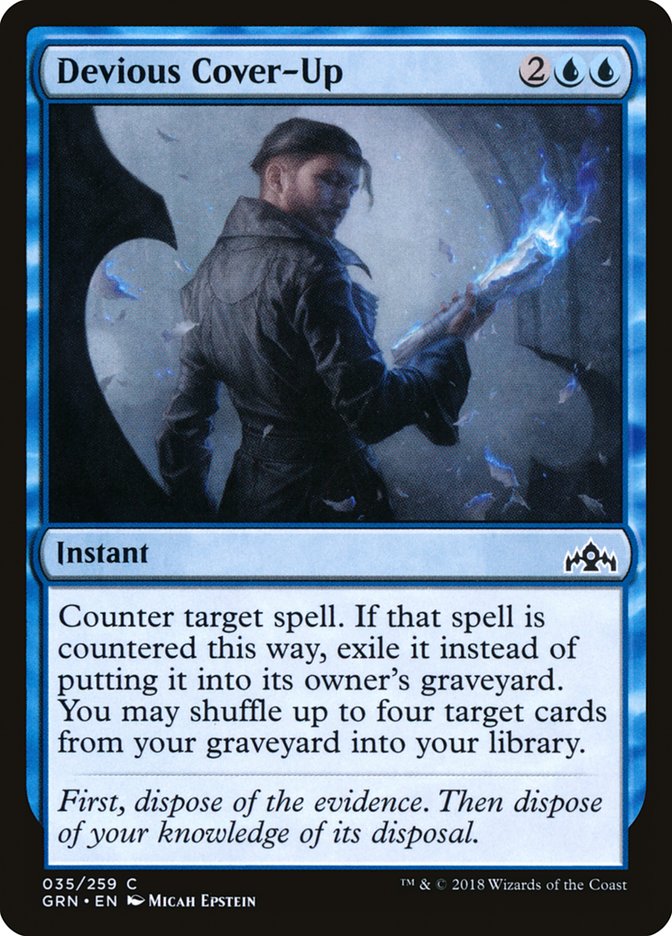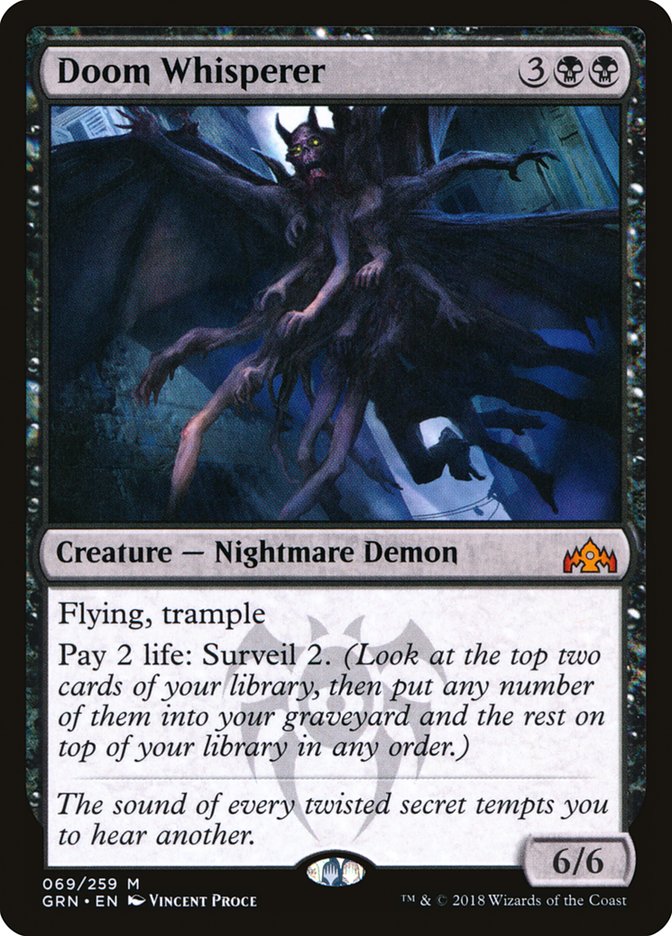I can’t help myself. Every time a new set is revealed, I forget every word I wrote about ideas being too cute. I just want to help every card become its best self, especially the ones that need the most help. Not the worst cards, just the cards with the most potential under the right circumstances.
And, okay, maybe there are certain kinds of cards I happen to see more potential in than others. I have some pretty clear biases, really, when it comes to the cards I want to let shine.
Sure, the ceiling on a creature like Legion Warboss is pretty high if it isn’t answered, but there’s not really a lot of work you have to do to make that happen, really. You’re just putting it in a deck with a curve and hoping your opponent runs out of removal. I’m more interested in making something like Vraska, Golgari Queen work. There’s a puzzle there, and I wonder if there’s a solution.
There are a lot of green and black cards I’m still trying to solve:
These are probably at the top of my list, but a lot of others interest me. The question is, now that we have some new tools and the format’s a little weaker overall, can we make any of these work?
Let’s start with Journey to Eternity. This wants cheap creatures and ways to kill them. It’s ideal if these creatures do something when they enter the battlefield or when they die, and it’s ideal if they can send themselves to the graveyard, especially without spending mana, or at least not much mana.
Let’s just jump to where I am with this and then we can talk through what’s going on.
Creatures (26)
- 4 Llanowar Elves
- 3 Doomed Dissenter
- 2 Thrashing Brontodon
- 1 Ravenous Chupacabra
- 1 World Shaper
- 1 Multani, Yavimaya's Avatar
- 1 Bone Dragon
- 4 Stitcher's Supplier
- 1 Izoni, Thousand-Eyed
- 1 Golgari Findbroker
- 4 Glowspore Shaman
- 1 Kraul Harpooner
- 2 Plaguecrafter
Planeswalkers (3)
Lands (24)
Spells (7)

The early game here is designed to get some bodies onto the battlefield that your opponent won’t want to kill and that you’ll be happy to sacrifice to enable your Journey to Eternity / Vicious Offering / Vraska, Golgari Queen follow-up. The rest of the deck is a toolbox of creatures you’ll want access to when you’ve transformed Journey to Eternity. Multani, Yavimaya’s Avatar and Bone Dragon offer large late-game threats that you can have access to without Atzal, Cave of Eternity.
Kraul Harpooner is a really exciting addition to this deck as cheap removal for fliers that would otherwise be a problem for a strategy that relies pretty heavily on blocking. The card can also easily lock your opponent out of keeping a flier on the battlefield if you flip Atzal, since it can trade with any flier when you return it to the battlefield and then it goes right back to your graveyard to do it again.
Plaguecrafter can do a similar trick with other creatures, making your opponent lose a card and sacrificing itself. In fact, if you can grind your opponent down far enough, you can actually “lock them out” by returning this with Atzal every turn in their draw step and sacrificing it to its own ability.
Thrashing Brontodon offers recurring access to answers to artifacts and enchantments, and it’s also one of the most reliable ways to transform Journey to Eternity, since you can sacrifice it to destroy Journey to Eternity, but Journey to Eternity will transform before the ability resolves and you’ll end up with Atzal and a Thrashing Brontodon.
World Shaper just lets you start going huge if you return it in the late game and it dies and you get all the lands from your graveyard back.
Golgari Findbroker gives you access to Vraskas in your graveyard.
The sideboard is a good mix of traditional sideboard cards like discard, removal, planeswalkers, Sagas, and Arguel’s Blood Fast, as well as more toolbox creatures.
Changing gears, another card I’m really interested in is Hatchery Spider. It’s like a Genesis Hydra that you have to cast for X=5, and it only works if have a graveyard full of creatures, and it’s a little more restricted in what it can find, but it has reach and seven toughness. On second thought, that sounds a lot worse than Genesis Hydra, but I still think it looks like a sweet graveyard/ramp payoff.
Wait, what’s Graveyard/Ramp? Great question.
Creatures (28)
- 4 Llanowar Elves
- 4 Jadelight Ranger
- 2 World Shaper
- 4 Dusk Legion Zealot
- 1 Multani, Yavimaya's Avatar
- 4 Stitcher's Supplier
- 1 Izoni, Thousand-Eyed
- 2 Molderhulk
- 4 Glowspore Shaman
- 2 Hatchery Spider
Planeswalkers (1)
Lands (24)
Spells (7)

I want this to be good, but I’m skeptical. The constraints of filling your deck with creatures are just a bit extreme. There might be something going on here, but I’m guessing Hatchery Spider isn’t worth the effort, same as Molderhulk, sadly.
Let’s move right ahead to trying to take advantage of our graveyard in a more proactive fashion:
Creatures (36)
- 4 Llanowar Elves
- 4 Merfolk Branchwalker
- 2 Ghalta, Primal Hunger
- 4 Steel Leaf Champion
- 4 Stitcher's Supplier
- 4 Nullhide Ferox
- 4 Glowspore Shaman
- 4 Charnel Troll
- 4 Pelt Collector
- 2 Plaguecrafter
Lands (24)
Sideboard

Running 36 creatures and 24 lands isn’t often right, but Charnel Troll is a huge payoff for hitting a lot of creatures with Stitcher’s Supplier, Glowspore Shaman, and Merfolk Branchwalker. Pelt Collector and Ghalta, Primal Hunger also like to play with a lot of other creatures, and Nullhide Ferox further pushes us away from wanting noncreature cards. Pelt Collector really shines here, with four- and five-power creatures at three mana, and six power at four.
The mana is a little unstable, in that there are only thirteen black sources and there are five lands that don’t cast Steel Leaf Champion, but Glowspore Shaman and Llanowar Elves both help with casting Steel Leaf Champion and you don’t strictly need black early. There’s another possible fail state with the deck where you can draw Charnel Trolls and no enablers, or else miss your enablers, but you should usually be able to cast a different three-drop in those spots and cast Charnel Troll later in the game after your opponent has killed some of your creatures.
The gameplan is really one-dimensional in Game 1, but the creatures hit extremely hard.
After sideboarding, Duress and Arguel’s Blood Fast come into make things a lot harder for control, and you have some options on removal. I’ve leaned toward Kraul Harpooner and Price of Fame, despite the fact that they’re pretty narrow, because removal spells that put creatures in your graveyard a lot better than those that don’t, though maybe I’m fixating a little too much on Charnel Troll.
It’s also possible that, if we’re working so hard to enable Charnel Troll, we want some other Undergrowth cards, but Charnel Troll doesn’t exactly play well with others. Rhizome Lurcher mostly seems like a bad Nullhide Ferox, and I don’t think we’re going quite big enough to want Golgari Raiders.
I mentioned Song of Freyalise. I’m curious about an Abzan token strategy.
Creatures (15)
Planeswalkers (4)
Lands (23)
Spells (18)

Traditionally, strategies that go wide struggle with sweepers. This deck has a lot of countermeasures for that. Hunted Witness and Doomed Dissenter leave creatures behind, which also helps make sure your opponent can’t kill your creatures to turn off Song of Freyalise. Legion’s Landing transforms into a resilient threat.
History of Benalia and Rite of Belzenlok offer creatures on a delay, which makes your opponent wait to sweep everything. Vraska, Golgari Queen lets you essentially move resources from the battlefield to your hand, decreasing the extent to which you’re overextended. Divine Visitation turns any token-making card into a threat that must immediately be dealt with.
As a result, spot removal is almost worthless, sweepers are taxed, and attacking is tricky because you have such good blockers. Really cheap sweepers like Path of Mettle, Golden Demise, and Goblin Chainwhirler are still effective, but your opponent needs to have exactly the right answers.
After sideboarding, Conclave Tribunal offers an extremely versatile answer. As always, I lean on Duress and Arguel’s Blood Fast against control. Additional Divine Visitations let you go bigger against anyone who’s trying to play an interactive game against you, and Shalai, Voice of Plenty and Lyra Dawnbringer punish people who are trying not to interact with you.
This list might want a little more removal maindeck, and I’m not sure about Rite of Belzenlok, but this deck looks like it might actually have some game to me.
The other splash we want to consider is blue, which offers a different path to filling the graveyard with Surveil.
Creatures (9)
Planeswalkers (1)
Lands (26)
Spells (24)

I’m not sure how best to accomplish my goal. What I want to do is to make my deck small with surveil and then shuffle the good cards back and keep casting Vraska’s Contempt and Sinister Sabotage over and over. I like the idea of getting a ton of lands onto the battlefield with The Mending of Dominaria, but I don’t want to play that many creatures.
I might be able to get away with playing The Mending of Dominaria without too many creatures because I can surveil the few I have into the graveyard. At the same time, maybe Gaea’s Blessing is better because I can get everything back for free if I surveil it, and it doesn’t require as much green mana, but it also doesn’t let me choose to only put some things back.
I can also do everything I’m trying to do without splashing green, using Devious Cover-Up, which I absolutely love, but it’s a little clunky and doesn’t let me go huge with The Mending of Dominaria, though that might not be necessary.
Even if I’m just using Devious Cover-Up to recycle my library, I like the idea of splashing a good planeswalker, and Vraska’s a little easier on the mana than Teferi, Hero of Dominaria, but Teferi might still be a better option, since the mana’s pretty easy for a small splash like that anyway, thanks to surveil.
Blood Operative and Vraska’s Contempt allow you to recuperate life lost to attackers and Notion Rain, which is important, but I’m not sure if we can get away with tapping mana on our turn for Notion Rain, and, despite Chemister’s Insight not having surveil, we might need to play it instead, or a mix. Discarding Blood Operative to Chemister’s Insight is potentially pretty good, as is Surveilling it into the graveyard.
I’m not sure about Doom Whisperer. It’s a great card, but this deck might not be the best fit for it. Right now I have it in so that I have something good to return with The Mending of Dominaria, but maybe a better plan is to use Bone Dragon and not The Mending of Dominaria, either just relying on Devious Cover-Up or possibly using Bone Dragon to sculpt your graveyard for Gaea’s Blessing, though that sounds like the kind of late-game nonsense that will never actually come up, whereas Gaea’s Blessing messing up your Bone Dragon will come up.
I’m definitely concerned with this deck’s early game. It probably needs more removal, but I’m not sure how much or what kind without having a better idea of how the aggro decks will look in the new Standard.
My real conclusion about blue here might just be that you should respect Devious Cover-Up, and it might change how control decks are built, though Unmoored Ego can punish people who go too far.


